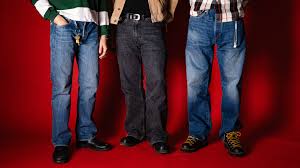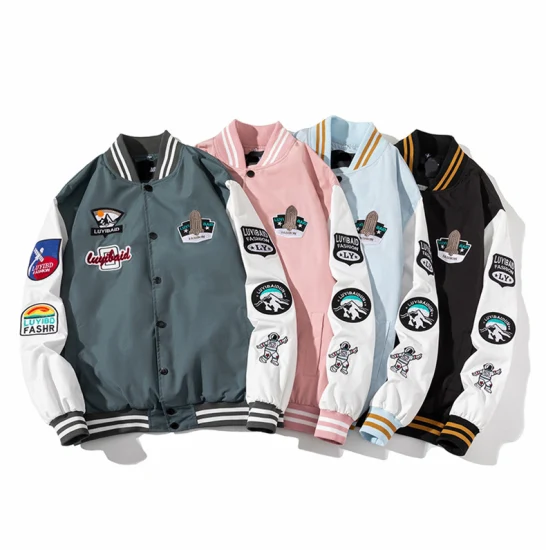Introduction
Jeans grow faster than just a clothes – they symbolize freedom, rebellion, fashion and cultural identity. From cowboys to runway models, everyone is worn, from workers to Vardal stars, jeans have crossed their disinterested beginning to dissolve a global event. This vandible discovers the attractive journey to jeans in the 21st century: their origin, development, production process, cultural effects and memorable relevance.
Origin of jeans
Birth of denim
The story of jeans begins within the nineteenth century with the invention of denim, which is a long -lasting material that originated in France. The word “denim” is considered from the French word “Surge de Nomeres”, indicating a strong fabric from a metropolis N, mmes in southern France. While the fabric was accepted for its long life, it was not yet taken on the prestigious position these days.
Levi Strauss and Jacob Davis
The megakosom of the present -day jeans is credited to a borean immigrant levy Strauss in the United States. In 1853, Strauss moved to San Francisco during a gold rush and began selling dry objects. With tailor Jacob Davis, he created long -lasting pants with copper rivets to fulfill the wishes of miners and workers. In 1873, Strauss and Davis acquired a patent for their riveted trousers – the primary real pair of jeans.
The Rise of Workwear
The Undecorous Collar Uniform
Jeans became a staple for laborers in the American West. Farmers, cowboys, railroad people, and miners prized them for his or her ruggedness and practicality. The signature indigo undecorous dye was each distinctive and purposeful, covering stains from nonflexible hard work.
The Role of American Industry
The enlargement of American enterprise helped popularize jeans as vital workwear. Brands like Levi’s, Wrangler, and Lee emerged as key gamers, each designing unique styles acceptable for variegated trades. For instance, Wrangler have become famous among rodeo cowboys, even as Lee catered to manufacturing unit people.
From Workwear to Fashion Statement
Post-War Popularity
After World War II, returning infantrymen delivered denims whilst to civil lifestyles. Their undertone with the running matriculation and rugged masculinity started to shift as younger human beings unexplored them as symbols of refractoriness and individuality.
The Rebellion of the 1950s
In the Fifties, jeans have become a statement of young people revolt. Icons like James Dean in Rebel Without a Cause and Marlon Brando in The Wild One cemented denims as anti-established order apparel. Many schools vetoed them, but that only improved their request amongst teens
The 1960s and Counterculture
During the Sixties, jeans were embraced through the counterculture movement. Worn by means of hippies, starchy rights activists, and anti-war protesters, denims became a uniform of change. Embellished with patches, embroidery, and peace symbols, they had been both purposeful and expressive.
Global Domination of Jeans
International Appeal
By the Nineteen Seventies, denims had long past worldwide. They have been worn by using human beings wideness continents, irrespective of subculture or class. In the Soviet Union and Eastern Europe, denims have been contraband—symbols of Western self-rule and individualism smuggled wideness borders.
Designer Jeans of the Nineteen Eighties
The Nineteen Eighties noticed the upward push of dressmaker jeans. Brands like Calvin Klein, Jordache, and Guess grew to wilt denim into luxurious fashion. Tight-becoming, excessive-waisted denims with stylized while wallet were the rage, regularly featured in provocative commercials that emphasised intercourse request and standing.
The 1990s and Denim Diversity
In the Nineteen Nineties, the grunge and hip-hop deportment widow new denim styles. Baggy jeans, distressed denim, and overalls meditated a well-appointed and rebellious attitude. Simultaneously, high-stop manufacturers like Versace and Dolce
Manufacturing Jeans
The Denim Fabric
Denim is a twill weave material, traditionally crafted from cotton. Its diagonal ribbing sets it untied from other cotton fabric. Indigo dye is used to verisimilitude the yarn, and through the years, this dye fades in unique methods, giving each pair of jeans a private contact.
- The Production Process
Cotton Cultivation: Cotton is harvested and processed into yarn. - Dyeing: Yarns are dyed with indigo.
- Weaving: Denim is woven the usage of shuttle or projectile looms.
- Cutting and Sewing: Patterns are cut and sewn into jeans.
- Washing and Finishing: Techniques like stone-washing, sandblasting, and enzyme washing requite denims their very last appearance.
Environmental Impact
The manufacturing of jeans is aid-extensive. It takes sincerely 1,800 gallons of water to make a single pair. The use of chemical substances and dyes can pollute water sources. In response, many manufacturers are now raising sustainable practices, including natural cotton, water-saving technology, and upstanding exertions requirements.
Styles and fits
Classic fits
- Strait-Leg: A timeless style with the same width from hip to ankle.
- Bootcut: Widespread on the marrow to unbeat the boots
- . Relaxed fit: Dyel, repetition and dynamics offer.
Modern Trends
- Skiny Jeans: Embrace the soul tightly; Popular within the 2000s.
- Boyfriend Jeans: a comfortable suit with a dull look.
- Fled Jeans: Bell-Backside Revival from the 1970s.
- High-grade: popular in both vintage and trendy styles.
Customization
adaptation Jeans can be highly individual, up to the pattern of disturbed denim (unwanted and harsh) with rip and disappearance. Some fan “smash” in raw denims over months or years, causing an accurate crease for their soul and lifestyle.
Cultural Significance
A Symbol of Freedom
Jeans constitute democracy in fashion. They are worn by the wealthy and negative, young and old. They mistiness the strains among matriculation and standing, offering a worldwide garment with character expression.
Music and Film Influence
Musicians and actors have unceasingly propelled denims into cultural relevance. The Beatles, Bruce Springsteen, Madonna, Tupac, and Kurt Cobain all made denim a part of their non-public emblem. In movies, denims constitute revolt (Easy Rider), sturdiness (Die Hard), or sensuality (Grease).
Political and Social Statements
Jeans have performed a function in social justice and resistance. From hard work strikes to starchy rights marches, they’re often worn by means of the ones hard the gadget. In Iran, girls have worn jeans as quiet refractoriness of get dressed codes. In the U.S., “Jeans Day” campaigns boost sensation for sexual violence.
The Business of Jeans
Global Industry
The international denim market is worth over $70 billion. Major gamers encompass Levi Strauss and Co., VF Corporation (Wrangler, Lee), Diesel, G-Star RAW, and Uniqlo. Fast malleate manufacturers like Zara and HandM furthermore dominate the market with inexpensive denim services.
E-Commerce and Customization
Online buying has revolutionized the denim enterprise. Brands now provide customization tools, three-D becoming, and AI-powered recommendations. Companies like Unspun use soul scans to create custom-in shape jeans with minimal waste.
Secondhand and Vintage Markets
Vintage denims are especially admired. A pair of Levi’s from the early 1900s can promote for thousands of dollars. Platforms like eBay, Grailed, and Depop guide a robust secondhand market, selling sustainability and nostalgia.
Type of jeans
Sustainab
By Fit
- Skinny Fit
Tight from waist to ankle - Clings carefully to the body
- Popular amongst each men and women
- Slim Fit
Slightly looser than thin denims - Tapered however not tight
- Offers a graceful squint with more and more consolation
- Regular Fit
Straight through the hip and thigh - Traditional, archetype in shape
- Comfortable and versatile for regular wear
- Relaxed Fit
Looser within the thigh and seat region - Ideal for worthier soul sorts or comfortable styles
- Often selected for comfort
- Loose Fit (Baggy Jeans)
Very loose from waist to ankle - Popular in Nineties hip-hop and skater fashion
- Makes a comeback in contemporary streetwear
By Design Features
-
Distressed Jeans
Ripped, frayed, or diminished - Street-fashion and edgy appearance
- Often hand-crafted or gadget-handled
- Raw Denim
Unwashed and untreated - Dark indigo colour
- Develops custom fades through the years
- Acid Wash / Stone Wash
Washed with chemical substances or stones - Creates a faded, worn appearance
- Popular in 80s and 90s style
- Cargo Jeans
Feature cargo wallet on sides - Utility-inspired and purposeful
- Often worn in unstudied or streetwear seems
- Patchwork Jeans
Denim portions sewn collectively - Creative and expressive
- Part of DIY or boho fashion
- Embroidered or Printed Jeans
Decorated with patterns or photographs - Adds a personalized and originative touch
- By Fabric Style
Stretch Jeans
Denim composite with elastane or spandex - Provides flexibility and comfort
- Often determined in skinny and slender fits
- Non-Stretch (Rigid) Denim
Traditional cotton denim - Stiff before everything however softens with wear
- Long-lasting and moldable
Sustainability and the Future
- Eco-Friendly Innovations
Brands are responding to environmental concerns with improvements like: - Laser distressing (replacing sandblasting)
- Ozone washing (uses air rather than water)
- Recycled denim fibers
- Organic and regenerative cotton farming
Ethical Manufacturing
Consumer strain has led to more transparency in deliver chains. Certifications like Fair Trade, GOTS (Global Organic Textile Standard), and B Corp assist perceive ethically made denim.
The Future of Jeans
Smart textiles, biodegradable fibers, and 3-d-revealed denim are on the horizon. Jeans are moreover rhadamanthine increasingly inclusive in sizing and gender expression. The fashion is transferring in the direction of sluggish fashion—fewer, better-nice pieces with timeless attraction.
conclusion
From rugged workwear to malastate runway centerpiece, Denims has got the first rate change. They are a test for power of innovation, flexibility and cultural expression. As to customize Malleate, denims live a regular – habit, reinvestment, and reflecting the time we live. Whether distressed, dyed, sewn, or torn, denims inform a story – a one that spreads continents, generations and ideologies.


